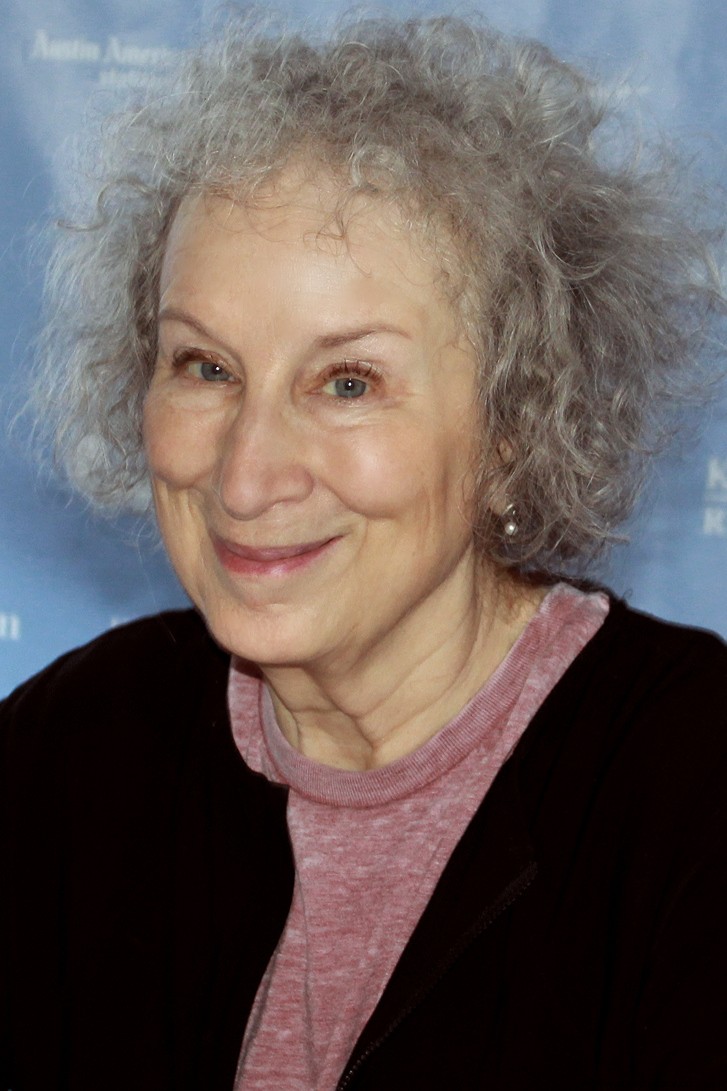Canadian novelist, Margaret Atwood (b. 1939) has received numerous awards for her literary work. She is known, in particular, for her dystopian science fiction novel The Scarlet Maid , adapted in series. In 2018, you voted for her for the Nob'Elle prize for literature!
The passion for writing

The second of the three children of Margaret Dorothy and Carl Edmund Atwood, Margaret Eleanor Atwood was born in Ottawa, Canada on November 18, 1939. Both of her parents are scientists. Her father majored in entomology (study of insects), and Margaret spent much of her childhood roaming the Canadian woods with him.
An avid reader, Margaret wrote her first poems at the age of six and realized that she wanted to become a professional writer as a teenager. When she continued her studies at Victoria University at the University of Toronto, she published poems and articles in the literary journal of the University. In 1961, she obtained a diploma in Arts in English. The same year, she obtained her first literary award:the E. J. Pratt Medal, granted by the University for her collection of poems Double Persephone .
Teaching career
Margaret Atwood continues her studies at Radcliffe College then began a doctorate at Harvard but never completed his thesis.
After becoming a teacher, Margaret taught at several Canadian universities (University of British Columbia, Sir George Williams University in Montreal, University of Alberta) and then in America (University of Alabama, New York University).
In 1968, she married Jim Polk but divorced five years later. She then begins a relationship with the novelist Graeme Gibson, with whom she will have a daughter, Eleanor Jess Atwood Gibson.
First novels
Along with her teaching career, Margaret Atwood is actively pursuing her passion for writing. In 1969, she published her first novel, The Edible Woman , featuring a young fiancée who becomes unable to eat and sees herself transformed into a product of consumer society. Margaret will later refer to the work as “protofeminist”; although evoking the alienation of women, it appears before the second wave of feminism and is not the fruit of conscious feminist reflection.
His subsequent novels, such as Surfacing (Surface , 1972), Lady Oracle (1976),Body Harm (Marked on the body , 1981) feature female characters, often struggling with a patriarchal society. These works frequently explore and question issues of gender identity. She also often discusses Canadian culture and the relationship of humans with animals in her writing.
The Scarlet Maid
In 1985, Margaret Atwood published her most famous work, The Handmaid's Tale (The Scarlet Maid ). A dystopian anticipation, the book depicts a future dominated by religion, where women are divided into three classes:Wives, wielding power, Marthas, who take care of domestic chores, and Scarlet Handmaidens, dedicated to reproduction, of which heroin is a part.
The Scarlet Maid earned Margaret many awards, including the first Arthur-C.-Clarke Prize in 1985. The work was adapted into a film in 1990 and then into a series in 2017. Acclaimed by critics, the series based on the book was a great success. .
Margaret's subsequent novels, including Cat's Eye (Cat's Eye, 1988), The Robber Bride (The Thief of Men, 1993), Alias Grace (Captive , 1996), The Blind Assassin (The Blind Killer, 2000) or even The Penelopiad (The Odyssey of Penelope , 2005) earned him new awards and critical acclaim.
Margaret is also the author of the The Last Man trilogy. , exploring in turn a dystopian future where men seem to have disappeared and where the Earth, devastated, is populated by genetically modified creatures.
A committed and humanist woman, Margaret was named Humanist of the Year in 1987 by the American Humanist Association . She was included in Canada’s Walk of Fame (Canadian Walk of Fame) in 2001.
